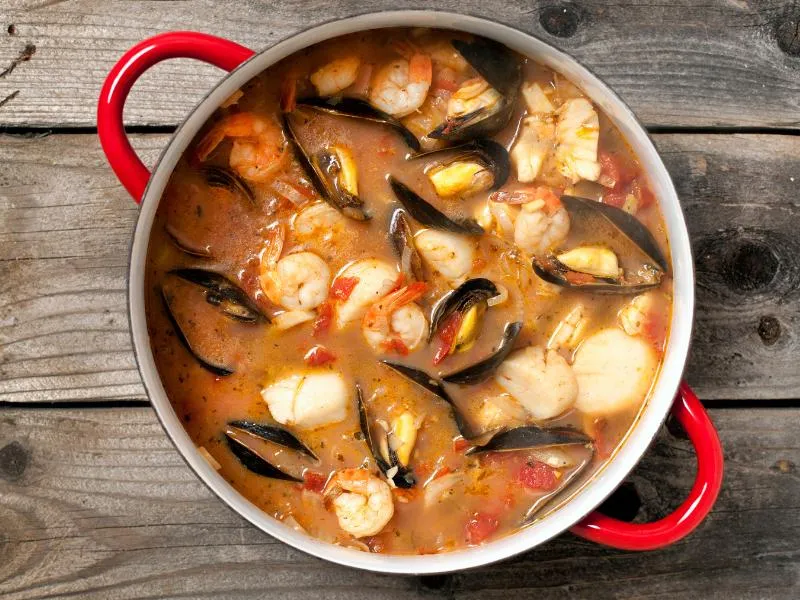Cioppino
A hearty tomato-based seafood stew with fish, shellfish, herbs, and white wine.
👉 View Authentic Recipe 👈
About This Dish
Cioppino is a flavorful seafood stew with Italian roots that was developed in the late 1800s by Italian immigrant fishermen in San Francisco, particularly those from Liguria. The name likely comes from the Ligurian dialect word “ciuppin,” meaning “to chop” or “chopped,” referring to the diverse mix of seafood scraps originally used in the dish.
This rustic stew features a robust tomato and wine-based broth infused with garlic, herbs, and a touch of chili heat. The seafood composition varies based on the day’s catch but typically includes a combination of firm white fish, crab, shrimp, clams, mussels, and occasionally squid or scallops. Unlike its Italian cousin zuppa di pesce, Cioppino tends to be more tomato-forward and often incorporates New World ingredients.
Traditionally, Cioppino was a communal fisherman’s meal, made from the unsold catch of the day and served with crusty sourdough bread to soak up the flavorful broth. Today, it remains a celebratory dish in Italian-American cuisine, especially popular during the Christmas season and for special gatherings along the California coast.
🧑🍳 Analyzed by CucinaBot
Why This Dish Works
Cioppino achieves culinary excellence through the layering of complementary flavors and cooking techniques. The initial soffritto of onions, garlic, and herbs creates a flavor foundation, while the tomatoes provide acidity and umami that balances the natural sweetness of the seafood. The staggered addition of seafood ensures each type cooks perfectly, while releasing proteins that enrich the broth. Wine adds complexity and helps extract flavor compounds from both the vegetables and seafood.
Key Success Factors
- Seafood Freshness: The quality and freshness of seafood is non-negotiable for authentic flavor
- Proper Timing: Adding each type of seafood at the right moment prevents overcooking
- Broth Development: Building the base broth with sufficient simmering time before adding seafood
- Temperature Control: Maintaining a gentle simmer rather than a rolling boil preserves seafood texture
Common Pitfalls
Many recipes rush the broth-building process, resulting in a thin, one-dimensional flavor profile. Another common mistake is cooking all seafood for the same duration, which leaves delicate fish overcooked while shellfish may be undercooked. Some non-authentic versions rely too heavily on prepared fish stock or tomato sauce instead of developing flavors naturally through the cooking process and seafood selection.
How to Judge Authenticity
When reviewing recipes, look for these markers of authenticity:
- Uses olive oil, not butter, as the primary cooking fat
- Includes at least three different types of seafood
- Builds flavor with white wine (not red)
- Contains minimal dairy (traditional versions have none)
- Specifies adding different seafood in stages based on cooking times